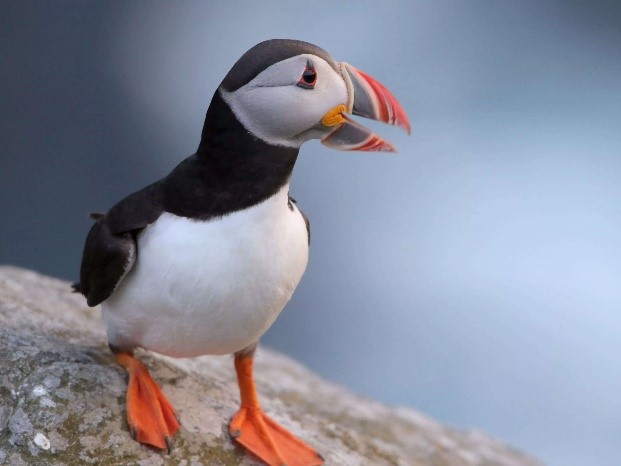Atlantic Puffins

Disclaimer: Copyright infringement not intended.
Context
- A hybrid species of Atlantic puffins that formed in the last century was recently discovered by scientists.
- This is the first time that scientists have been able to track how an Arctic species' genes have changed over time because of hybridization.
Findings of the Study
- The hybrid group formed when two of three subspecies of Atlantic puffins began mating six generations ago, around 1910.
- It began happening when climate change affected one of the subspecies' habitats, sending them to mingle with another group.
- All three subspecies of puffin that live around the Atlantic Ocean have been losing genetic diversity over the past century. This could make them less fit to survive in the future.
Implications of decreased Genetic Diversity
- Decreased genetic diversity can harm sperm quality across a population, decrease birth rates, and make the organisms within a group more susceptible to disease and parasites.
- All of these factors can make a group less resilient to climate change, and more likely to face extinction.
Divergence of subspecies in case of Arctic Puffins
- The original three subspecies began diverging from one another roughly 40,000 years ago. That likely corresponds to the breakup of an ancient glacier over the Arctic.
- The break up of the glacier put the different puffin populations onto different islands around the Atlantic, where they could evolve independently.
- One group settled the north of the Arctic (F. a. naumanni), one group landed on the coastlines of what would become the United Kingdom (F. a. grabae), and the other ( a. arctica), picked the south of the Arctic.
- Fast forward to 1910, more than 100 years after the start of the Industrial Revolution, when humans began releasing greenhouse gases into the air at a never-before-seen rate. The scientists found that this is when some of the northern Arctic colonies moved south, meeting at Bear Island in Norway.
- This happened because climate change made the northern habitat unsuitable for puffins. It could've been a disruption to the food chain from overfishing, a change in water temperature, or any number of human-related effects on the Arctic, that made them want to leave.
Significance of the study
- Studying these animals may help us understand how our actions may be affecting them.
- People will understand that their actions have effects for the Arctic in general and for the puffin in specific.
Genetic Hybridization
- Genetic hybridization is the process of interbreeding individuals from genetically distinct populations to produce a hybrid.
- A genetic hybrid would therefore carry two different alleles of the same gene.
- Hybridization occurs between species or populations, and can arise from either natural or anthropogenic causes.
- Hybridization is important in natural evolutionary processes, but can be a harmful force reducing species identity and reproductive success.
- Hybridization can increase fitness through heterosis, or reduce fitness through outbreeding depression.
- Hybridization contributes to decline and extinction of species through loss of reproductive potential and reduced population growth, or through genetic mixing and loss of genetically distinct populations.
|
PRACTICE QUESTION Q. Consider the following statements: 1.Hybridization can increase fitness through heterosis, or reduce fitness through outbreeding depression. 2.Hybridization contributes to the decline and extinction of species through loss of reproductive potential and reduced population growth. 3.Decreased genetic diversity can increase birth rates. How many of the above statements are correct? A) Only 1 B) Only 2 C) All 3 D) None Answer: B) Only 2 Statement 3 is incorrect. |





1.png)
